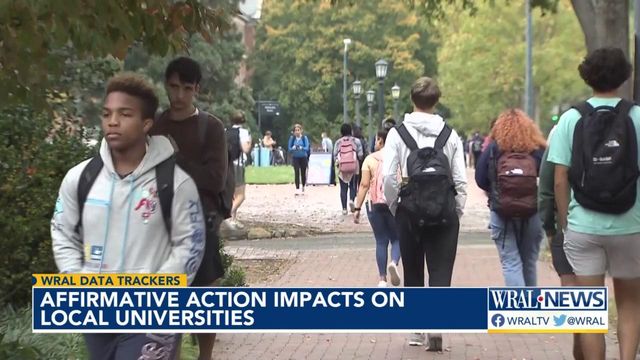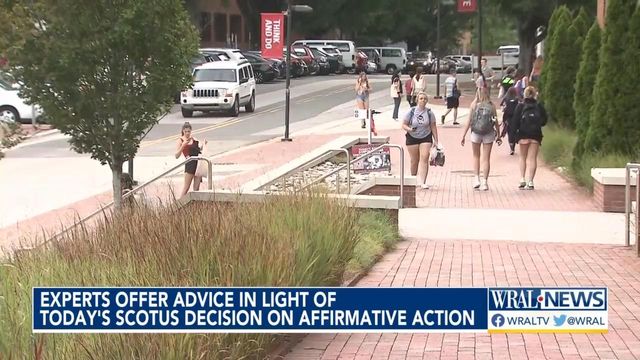UNC, Duke, NC State all saw their student bodies diversify under affirmative action, data shows
For more than four decades, universities across the country have used affirmative action as a plus factor in admissions but that will be coming to an end as the U.S. Supreme Court ruled the practice is unconstitutional.
Affirmative action resulted in diversifying the major universities in our area, data shows. Duke, The University of North Carolina at Chapel Hill and N.C. State all saw their share of white students decline in the last few decades.
The WRAL Data Trackers gathered student enrollment stats for those three universities starting in 1980 because it follows a precedent-setting ruling – the Bakke decision. That's when diversity became a nationwide justification for affirmative action.
"Within our institutions, minorities have been routinely shut out," said Kendra Johnson, the executive director of Equality NC.
Data from the National Center for Education Statistics shows, at that time, all three universities had primarily white student populations. In fact, about nine out of every 10 students on campus were white.
But by the time the lawsuit against UNC was filed in 2014, there was a shift in campus demographics. Hispanic students saw the most growth among students who are considered underrepresented minorities in higher education - those who are Hispanic, Black, American Indian or two or more races.
In recent years, admissions have leveled off for students who are underrepresented minorities while students who aren’t residents of the U.S. or who are Asian or Pacific Islanders now make up a larger share of the student population than they ever have before.
The case ruled on today was filed by a group that argued Asian Americans were discriminated against by preference being given to Black, Hispanic and Native American applicants. Data shows at UNC, Asian students made up less than 1 percent of the student body in 1980, and over 11% of it now.
Johnson said she is concerned that the ruling on affirmative action means eliminating a tool used to level the field which will change the campus makeup and varying perspectives offered related to that.
"People are challenging efforts to create a level playing field," Johnson said. "I don't think they understand. They see it as an unfair advantage that's being given to marginalized people when that is not actually the case. "











